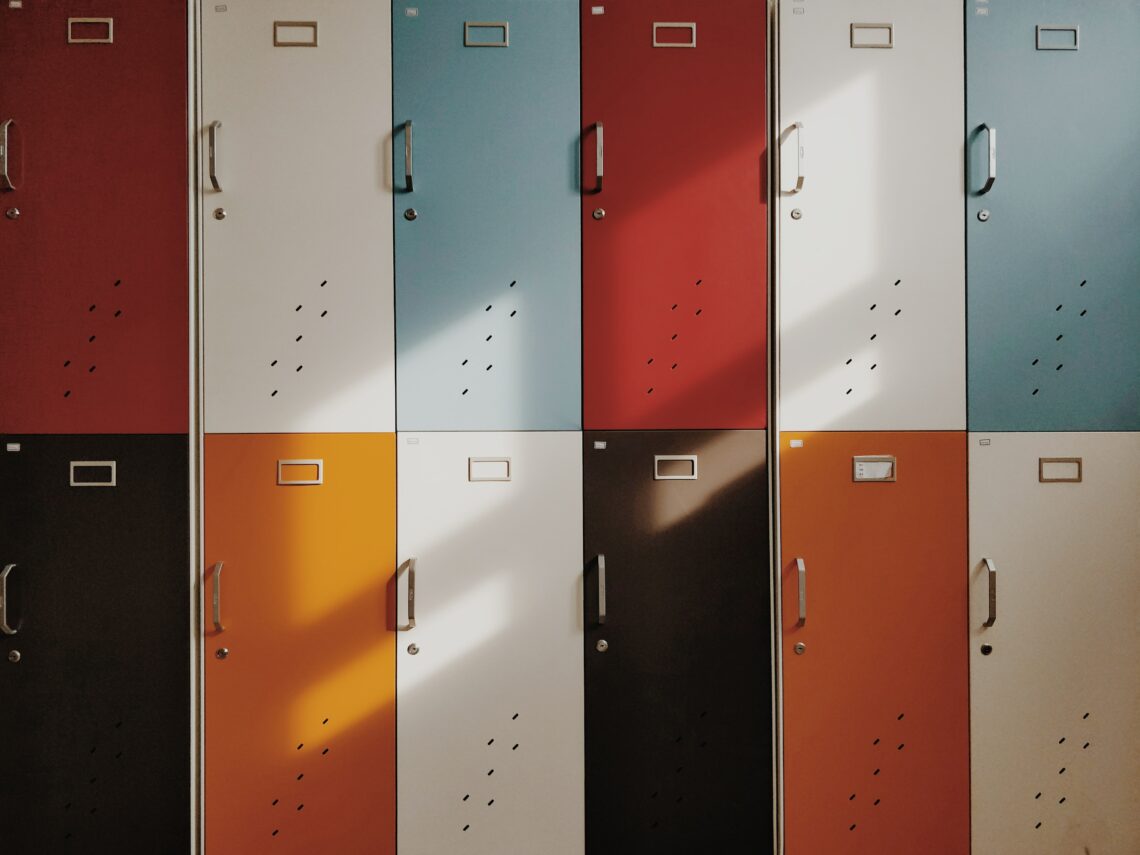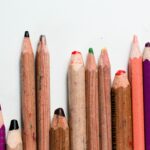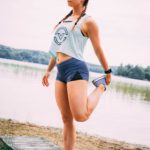Special Topics in Physical Health Education Presentation Assignment
We have focused on kindergarten to grade 3 sexual health education. The following is a list of subtopics with details that we have found to be most important for teaching sexual health to this age group, followed by our annotated bibliography and a list of extra classroom resources.
Sexual Health Education Subtopics
Boundaries
- Rules for touching
- Asking for permission
- Body parts
- Assertive language. Teaching how to use it and how to hear it.
Self-identity
- Personal Identity (gender, SOGI)
- Family structures
- Cultural diversity (differences, touching, clothing/garb, beliefs)
- Representation and normalization
- Terminology
Emotions
- Building knowledge through the terminology
- Identifying emotions
- Cause and effect
- Promote awareness of emotions and explaining
Personal Safety
- Identifying a safe adult / hazardous and unsafe situations
- Not giving out information (Strangers, on the internet)
- Identify and describe characteristics of positive relationships
- Strategies for accessing health info
Annotated Bibliography
1.
BC Teachers’ Federation. (n.d.). Gender Identity and Pronouns. Teach BC. https://teachbcdb.bct
f.ca/permalink/resource1255
This resource is a downloadable lesson plan from SOGI 123. The author indicates this lesson can be used in a kindergarten, grade one, two, or three class and has BC curriculum connections included. This lesson plan includes two separate lessons on gender and pronouns using the book 10,000 Dresses. It should be noted that each lesson is quite long, and may take a whole gym period to complete. The lessons include a read aloud, discussions, and activities about pronouns for students to work with. This lesson seems to be a bit advanced and after some consideration we thought it might work better to use this in grades two or three when the students have some prior knowledge. Or, have an introduction with a book like My Shadow is Pink to bring up ideas around outside looks not always matching the inside feelings.
2.
BC Teachers’ Federation. (n.d.). What is a family?. Teach BC. https://teachbcdb.bctf
.ca/permalink/resource830
This resource is a downloadable lesson plan from SOGI 123. It is geared towards a kindergarten or grade one class and has BC curriculum connections included. The lesson centers around reading one, or several, books about different families and contains some activities about families teachers can do with their class. The lesson also advises on how to introduce the words gay and lesbian, and that these words should never be used to tease someone. After reviewing this lesson, and the books it suggests I think this is a great way to start talking about different family structures and welcome students from all families to a classroom.
3.
Greater Victoria School District. (n.d.). Sexual health. Healthy, Safe and Caring Schools https://healthyschools.sd61.bc.ca/resources-links/sexual-health/
We wanted to make sure that we included resources from local districts in this assignment to better understand what resources are available near where we live and where many of us are likely to get jobs. This resource links to Victoria’s School District 61 Sexual Health guide. This link is another consolidation of useful resources that includes everything from Island Sexual Health to guides on how to Avoid homophobia and transphobia and the importance of Using gender-neutral language in the classroom. This resource not only offers valuable links and guides that can be used for younger students, but it has many resources that are relevant to older students as well.
4.
Nanaimo Ladysmith Public Schools. (2018). Appendix c k-10 personal and sexual health social justice curriculum. https://www.sd68.bc.ca/wp-content/uploads/Appendix-C-K-10- personal-and-sexual-health-social-justice-curriculum.pdf
Nanaimo Ladysmith Public School. (n.d.). Personal sexual health. NLPS learns. https://nlpslear ns.sd68.bc.ca/instruction-assessment/personal-sexual-health/
Similar to the previous resource for school district 61, we have included these two resources from Nanaimo school district 68. The first links to a document that outlines the topics that are to be covered in specific grades. This is a helpful document to understand what topics are appropriate at young ages and what teachers should wait to teach until grade four or later.
The second site links to the Nanaimo Ladysmith public school’s personal sexual health webpage. This site is simple to navigate and really nice to look at. It provides quick links to valuable teaching resources, such as GoTo Videos and Sexuality for all Abilities. Also included on the web page is a detailed chart of what topics in sexual health education get taught from grades K-10. Lastly, the site features a quick references section that has more information and links to more important web resources that cater to specific topics and grade levels.
5.
Nemours Foundation. (1995). How the body works. Kids Health in the Classroom. https://kidshealth.org/classroom/index.jsp?Grade=0&Section=welcome
Kids Health in the Classroom is a great website for teachers because it provides free resources for kindergarten to grade 12. The resources provided are based on the American company National Health Education Standards board. This is important to know because they are not from a Canadian company, although the resources still provide great information and can be used.
We primarily looked in the grades of kindergarten to grade 3, where they had subcategories listed: human body, health problems, and personal health. Each subcategory provided free resources that could be used in the classroom, such as; printable worksheets, lesson plans, and quizzes. This website is easy to navigate, and providing free resources makes it a great resource as a teacher.
6.
Teaching sexual health. (2015). My boundaries: Personal space and touch [PDF]. https://teachin
gsexualhealth.ca/app/uploads/sites/4/6-DA-Personal-Space-and-Touch-2015-1.pdf
We found this lesson outline for boundaries and personal space to be adaptable for several age groups. The lesson outlines the importance of having a feeling of safety and trust in your class for this type of activity so this is better situated in the middle or end of a school year. You will need hula hoops or masking tape for this lesson, and there are some handouts and examples you can print out. However, these might be more useful for older grades so be sure to check if they will work with the grade you are teaching before committing to this lesson. The resource moves through questions to ask the class, a board activity on appropriate/inappropriate touch, setting personal boundaries, strangers, scenarios, and a reflection.
7.
The Arc Foundation. (n.d.). British Columbia. SOGI 123. https://bc.sogieducation.org/
SOGI 123 is a great website that includes educational resources for parents and teachers that encompass sexual orientation and gender identity. Although they do have a large focus on the LGBTQ+ community, it also includes diversified families, such as; students raised by a single parent, by their grandparents, by their stepparents, and same sex couples. From a general overview, this website educates teachers and parents on how to encompass an inclusive environment.
Furthermore, through exploration of the BC Educators webpage, it includes a curriculum section that includes free resources. These resources range from videos that are attached to a PowerPoint presentation and a facilitator guide and lesson plans that can help enrich your teachings on this subject. Lastly, SOGI has a hyperlink to the BCTF Social Justice Workshop page, where they provide free workshops that are 1.5 to 3 hours in length. The workshops listed would be extremely beneficial to a teacher that needs extra guidance or wants to learn more to expand their knowledge and improve their teachings.
Link for workshops: https://www.bctf.ca/PD/workshops.aspx?id=233056
8.
Canadian mental health association Newfoundland-Labrador. (n.d.). Feelings wheel a tool for understanding emotions [PDF]. https://cmhanl.ca/app/uploads/2019/09/Feelings-Whe
el-Handout-2019.pdf
This image is a great resource for a teacher because it shows how many different emotions there are, and how someone may identify with each one. It also gives a detailed description for students to use, for example, if a student says “I am mad” that is very broad. Whereas, if they say “I feel frustrated because” allows the students to express their needs and feelings. A teacher could use this as a poster or handout sheet for the class, it is a great reference for the students to refer back on.
9.
The Human Rights Campaign Foundation. (n.d.). Creating safe and welcoming schools. Welcoming schools. https://www.welcomingschools.org/
We found this website was a great source when talking to a class about gender. The topics covered connect to the curricular content of “factors that influence self-identity” from the BC curriculum website. By hovering over the resources drop-down menu on the main webpage you can navigate to lesson plans, book lists, information on how to answer tricky questions, definitions, and video resources for inclusive schools. The section with lesson plans using storybooks (link) was the area we thought would be most helpful when tackling personal identity, family structures, and representation in PE for K-3 students. This link will take you to the area with lesson plans for promoting LGBTQ inclusive elementary schools.
10.
Upload Publishing Pty Ltd. (n.d.). Free resources for empowering children and educating yourself. Educate 2 empower publishing. https://e2epublishing.info/free-resources
This resource was included because of the posters, activities, and downloads it has on body safety and consent, and gender equality. There are some videos on those topics on this site, which can help get the conversation started if you are not quite sure how to approach these conversations. The section we thought would be most useful is the teacher downloads. Here you can find several printables including a sample letter to send home to families letting them know the class will be talking about body parts, private zones, and body boundaries. The website also has printable posters with teaching notes and body part worksheets for this lesson. There is also a PDF for the song “My Body is My Body” to help teach students that they have control of how people physically interact with them.
On your own resources
Storybooks
Mostly about gender and sex, emphasis on fluidity and representation.
Books intended for age ranges from preschool to grade 4.
In the classroom
- 10,000 Dresses by Marcus Ewert
- ABC of Body Safety and Consent by Jayneen Sanders
- A Fire Engine for Ruthie by Leslea Newman
- A Princess of Great Daring by Elenore Toczynski
- Annie’s Plaid Shirt by Stacy Davids
- Backwards Day by S. Bear Bergman
- Be Who You Are by Todd Parr
- Be The Difference by Jayneen Sanders
- Brontorina by James Howe
- Call me Tree by Maya Christina Gonzales
- Celebrate Your Body (and Its Changes, Too!) by Sonya Renee Taylor
- Clive and his Babies by Jessica Spanyol
- Consent (for Kids!) : Boundaries, Respect, and Being in Charge of You by Rachel Brian
- Dangerously Ever After by Dashka Slater
- Don’t Touch My Hair! by Barbara Saunders
- Don’t Hug Doug (He Doesn’t Like It) by Carrie Finison
- Flora and the Flamingo by Molly Idle
- Freckleface Strawberry by Julianne Moore
- From the Stars in the Sky to the Fish in the Sea by Kai Cheng Thom and Kai Yun Ching
- George by Alex Gino (chapter book, maybe for teens or tweens)
- Happy in Our Skin by Fran Manushkin
- I am Jazz by Jessica Herthel and Jazz Jennings (transgender)
- I’m Calm by Jayneen Sanders
- I Said No! a Kid-To-Kid Guide to Keeping Your Private Parts Private by Kimberly King
- Introducing Teddy by Jess Walton
- It feels good to be yourself by Theresa Thorn (gender identity)
- It’s Not the Stork! By Robie H. Harris
- It’s Okay to Be Different by Todd Parr
- It’s Perfectly Normal by Robie H. Harris
- It’s So Amazing by Robie H. Harris
- Jack (not Jackie) by Erica Silverman
- Jacob’s New Dress by Sarah and Ian Hoffman
- Julian is a Mermaid by Jessica Love
- Listening to my Body by Gabi Garcia
- Love your Body by Jessica Sanders
- My Body Is Special and Belongs to Me! by Sally Berenzeig and Cherie Benjoseph
- My Princess Boy by Cheryl Kilodavis
- Neither by Airlie Anderson
- No Means No!: Teaching Personal Boundaries, Consent; Empowering Children by Respecting Their Choices and Right to Say ‘No!’ by Jayneen Sanders
- Not All Princesses Dress in Pink by Jane Yolen
- Not Every Princess by Jeffrey Bone
- Not One Damsel in Distress: Heroic Girls from World Folklore by Jane Yolen
- One of a kind, like me/Unico Como Yo by Laurin Mayeno
- Pink is for Boys by Robb Pearlman
- Red by Michael Hall
- Roland Humphrey is Wearing a WHAT? By Eileen Kiernan-Johnson
- Rosa loves Cars by Jessica Spanyol
- Sex is a Funny Word by Cory Siverberg
- Sparkle Boy by Leslea Newman
- Talk About Feelings by Jayneen Sanders
- The adventures of Tulip, Birthday wish fairy by S. Bear Bergman
- The Amazing True Story About how Babies are Made by Fiona Katauskas
- The Boy with Pink Hair by Perez Hilton
- The Care and Keeping of You: The Body Book for Younger Girls by Valorie Schaefer
- The Every Body Book by Rachel Simon
- The Gender Wheel: A Story About Bodies and Gender for Every Body by Maya Christina Gonzales
- The Great Big Body Book by Mary Hoffman
- The Proudest Blue by Ibtihaj Muhammad
- They She He Me: Free to Be! By Maya Christina Gonzales
- They, She, He easy as ABC by Maya Christina Gonzales
- Wild by Emily Hughes
- What Makes a Baby by Cory Silverberg
- When Aidan Became a Brother by Kyle Lukoff
- Who Has What?: All About Girls’ Bodies and Boys’ Bodies by Robie H. Harris
- Worm Loves Worm by JJ Austrian
For Teachers
- Gender Born, Gender Made by Diane Ehrensaft
- Good Sexual Citizenship: How to Create a (Sexually) Safer World by Ellen Friedrichs
- Raising Them by Kyl Myers (book for teachers and parents)
- The Gender Quest Workbook: A Guide for Teens and Young Adults Exploring Gender Identity by Rylan Jay Testa, Deborah Coolhart, Jayme Peta
Video Resources
- Sex Ed Rescue – Childrens book reviews
https://www.youtube.com/channel/UCGfcbCgxY7pkbqF0lOaKH3w
- Sogi 1 2 3
https://www.youtube.com/watch?time_continue=239&v=ZDSARFjk7X0&feature=emb_logo’
- Queer Kid Stuff youtube channel
https://www.youtube.com/channel/UCecsVoeJcsXbAra7Sl4mOPw
Lessons
Worksheets
- Emotions – I Feel Statements
- Self-Regulation – Stress
- Trusted Adult
- Trusted Adult – Helping Hands
- Trusted Adult – Safety Network
Posters
Websites





